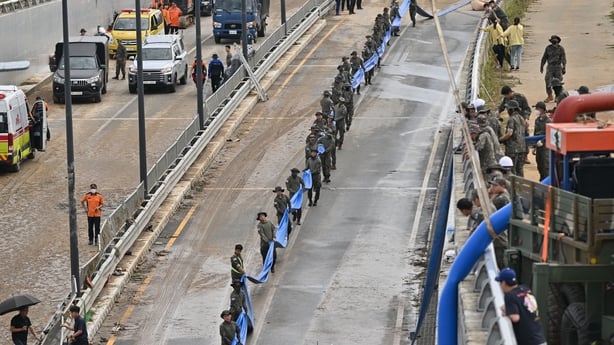Rescue workers recovered the last body and ended search operations at a flooded underpass in South Korea after dozens of people died in an incident that is now the subject of multiple official investigations.
The interior ministry said that 41 people were killed and another nine were still missing nationwide in the heavy downpours, most of them buried by landslides or falling into a flooded reservoir.
South Korea is at the peak of its summer monsoon season and days of torrential rain have caused widespread flooding and landslides, with rivers bursting their banks and reservoirs and dams overflowing.
Search and rescue operations at the 430m tunnel in Cheongju, North Chungcheong province, ended late last night after rescuers recovered the last body, it said.
The tunnel was inundated on Saturday morning after floodwaters swept in too quickly for the vehicles inside to escape. The interior ministry said a total of 17 vehicles, including a bus, were trapped and 14 people were killed.

The tunnel will remain closed for additional inspections as part of the probe into the cause of the deadly incident, it added.
South Korean President Yoon Suk Yeol has called for an overhaul of the country's disaster response system, describing the current situation as an emergency.
"Climate change is causing extreme natural disasters," he told a Cabinet meeting televised live.
"We cannot respond to this unprecedented abnormal weather the way we have been doing until now".
He urged officials to mobilise all available resources for restoration work.
Yesterday, the South Korean government and police launched separate inquiries into the flooding of the tunnel, with the president blaming mismanagement of danger zones for the loss of life.
The majority of the casualties nationwide, including 19 of the dead and eight of the missing, were from North Gyeongsang province, and were largely due to massive landslides in the mountainous area that engulfed houses with people inside.
The Korea Meteorological Administration forecast more heavy rain through tomorrow, and urged people to "refrain from going outside".
South Korea is regularly hit by flooding during the summer monsoon period, but the country is typically well-prepared and the death toll is usually relatively low.
Scientists say climate change has made weather events around the world more extreme and more frequent.


